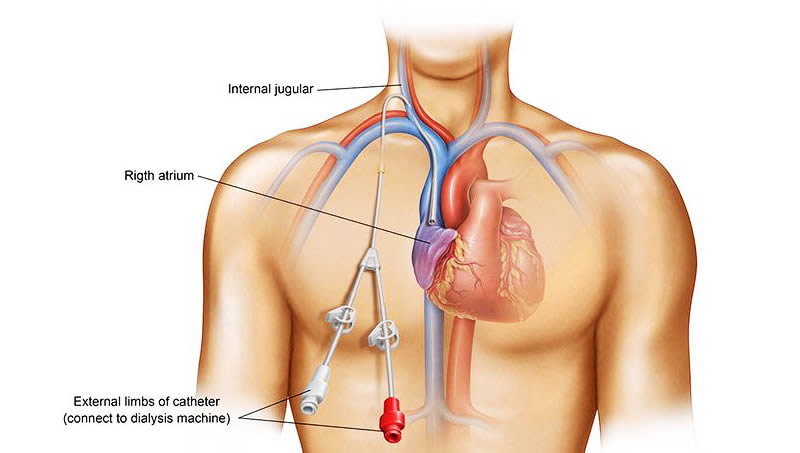Menu
- Home
- Treatments
- Our Providers
- About Us
- Patient Info
- Testimonials
- Locations
- Blog
- Financing
- Contact Us
- Home
- Treatments
- Our Providers
- About Us
- Patient Info
- Testimonials
- Locations
- Blog
- Financing
- Contact Us

In the symphony of human physiology, the kidneys orchestrate the filtration of waste and excess fluids from our bloodstream. However, these vital organs can falter. For individuals grappling with this medical challenge, the lifeline comes in the form of hemodialysis, a crucial treatment that relies on specialized access points. Enter the Permcath: a beacon of hope and a gateway to renewed vitality. On this page, we’ll establish the role of permcath placement in orchestrating hemodialysis. National Vascular Associates is proud to have physicians, and we are ready to schedule you a convenient appointment or consultation.
Kidney failure, also known as end-stage renal disease (ESRD), marks the cessation of the kidneys' ability to adequately filter waste and regulate fluid balance. Causes can range from chronic conditions such as diabetes and hypertension to genetic predispositions. As renal function declines, toxins accumulate in the bloodstream, and fluid imbalances manifest, posing severe threats to overall health. When the symphony of kidney function falls silent, hemodialysis steps in as a lifesaving encore. This process involves the extracorporeal removal of waste products and excess fluids from the blood. A dialysis machine, acting as an artificial kidney, becomes the conductor of this critical filtration, allowing individuals with kidney failure to sustain life while awaiting transplant or managing the condition long-term.

The effectiveness of hemodialysis hinges on establishing a reliable access point to the bloodstream. Vascular access is an essential component that can significantly impact the success of dialysis treatments. While arteriovenous (AV) fistulas and grafts are often the preferred options due to lower infection rates, there are instances where a Permcath becomes the lifeline of choice.
Permcath placement is a meticulous surgical procedure that crafts a direct path to the bloodstream for the orchestration of hemodialysis. Conducted by skilled vascular surgeons, this procedure typically takes place in a hospital setting. The chosen site for Permcath placement is often the internal jugular vein near the neck or other large veins, ensuring optimal blood flow for the dialysis process.
The Permcath itself is a marvel of medical engineering: a long, flexible tube with two lumens designed to facilitate the seamless flow of blood. One lumen allows blood to travel from the body to the dialysis machine while the other returns filtered blood to circulation. The external portion of the catheter exits the body, strategically placed for easy connection during dialysis sessions.
Ensuring the longevity and effectiveness of Permcath placement requires vigilant care and maintenance. The exit site where the catheter protrudes from the body demands meticulous attention. Regular cleaning, adherence to hygiene protocols, and gentle handling to prevent trauma or dislodgment are imperative. The goal is to minimize the risk of infections and complications and protect the lifeline that Permcath placement has established.
While other vascular access options may be preferred in certain situations, the Permcath serves as a lifeline when immediate, reliable access to the bloodstream is imperative. Call National Vascular Associates if you’d like to consult with a member of our team or schedule a flexible appointment.